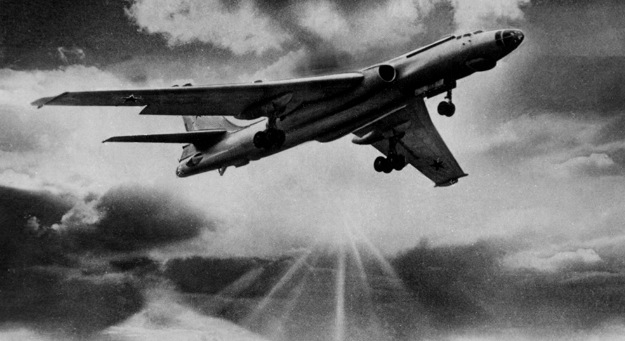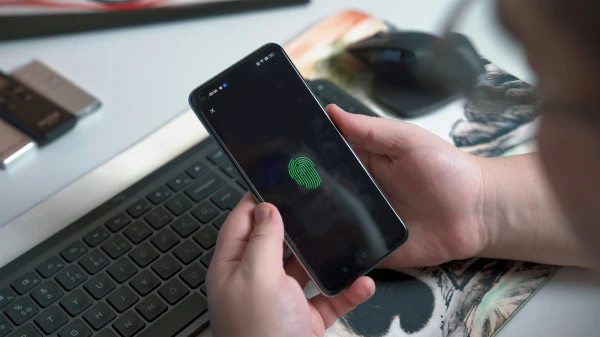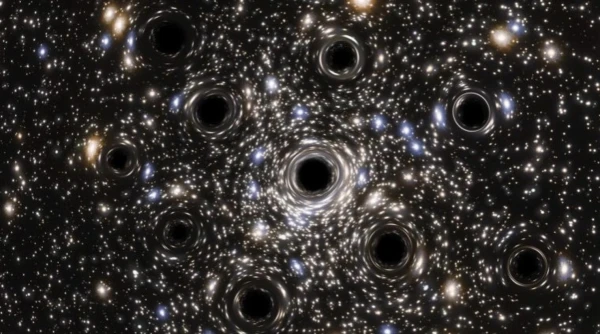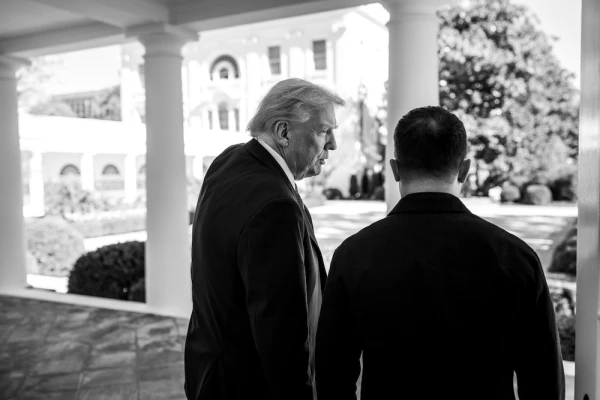
"We – inventors, scientists, engineers, workers – created a terrible weapon, the most terrible in the history of mankind."
On November 22, 1955, tests of the thermonuclear bomb RDS-37 took place at test site No. 2 in Semipalatinsk – a "new word" in the world of nuclear weapons. The brainchild of Andrei Sakharov not only opened a new chapter in the arms race but also brought the USSR and the USA closer to nuclear parity. About the development, testing, and consequences of the bomb's emergence – in the material of "Vedomosti."
Catching Up and Surpassing
In the late 1940s, the USSR, unwilling to concede primacy to the USA, entered into a fierce nuclear arms race. The power of American atomic weapons, which had been demonstrated to the world during the tragedies of Hiroshima and Nagasaki, made the United States virtually invulnerable. The Soviet Union sought to catch up with and then surpass its main rival at all costs.
In 1949, the USSR tested its first atomic bomb, but this did not mean that the race was over: it had only just begun. On November 1, 1952, the USA conducted tests of its first thermonuclear bomb, "Ivy Mike." Just a year and a half later – on March 1, 1954 – the Americans demonstrated to the world the thermonuclear bomb "Castle Bravo." The device with a two-stage charge, whose power was initially estimated at 4-8 megatons, exceeded all expectations. "Castle Bravo" detonated with a yield of 15 Mt, and even the bunker where specialists took shelter during the explosion barely withstood it.
The tests were deemed successful despite the "collateral damage": significant doses of radiation received by civilians caught in the radiation zone.
The USSR also excelled in the development of new thermonuclear weapons. The early stage of research began in the summer of 1948, when a special scientific group was created under the leadership of Igor Tamm. It included a young Andrei Sakharov. At the same time, Yakov Zel'dovich's team at the Institute of Chemical Physics was working on the design of a bomb that was named "the tube," which ultimately turned out to be a dead-end idea.
As recalled in his article by Soviet and Russian physicist Yuri Romanov, a couple of months later, Sakharov articulated fundamental ideas that determined the further development of the nuclear project: "As a fuel for the thermonuclear device, the Zel'dovich group previously considered liquid deuterium (possibly mixed with tritium). Sakharov proposed his variant: a heterogeneous design of alternating layers of light substances (deuterium, tritium, and their chemical compounds) and heavy uranium-238, which he named 'layer cake.'"
"Layer Cake" with Uranium
Work on the direct creation of a thermonuclear bomb using the "layer cake" method began in the USSR in the spring of 1950, when nuclear physicists Sakharov, Tamm, Romanov, and others moved to the specially created KB-11, located in the secret city of Arzamas-16 (now Sarov). It was headed by Igor Kurchatov.
The tests of the first Soviet hydrogen bomb RDS-6s took place on August 12, 1953, at the Semipalatinsk test site. They were deemed successful, although the explosion yield, which was about 400 kilotons, turned out to be insufficient. The design features did not allow for surpassing the limit of 1 megaton; a fundamentally new solution was required.
Academician Boris Litvinov recalled: "The design was complex, bulky, and could not ensure long-term operation in the troops, as the materials used could not be stored for long without losing their qualities. Nevertheless, <…> it was planned to carry out work on further improving RDS-6s. However, during the work, new ideas emerged, and their implementation began in the design now known as RDS-37."
"Third Idea"
In early 1954, Andrei Sakharov, Yakov Zel'dovich, and other physicists collectively proposed a new principle for the thermonuclear bomb, which became known as the "third idea." There are still disputes about authorship. "We had a new idea of a fundamental nature, conditionally called 'the third idea' (referring to the first and second ideas articulated by me and Ginzburg in 1948). Apparently, several employees of our theoretical departments came to the 'third idea' simultaneously. One of them was me," Sakharov wrote in his memoirs.
One of those who forged Russia's "nuclear shield" was Academician Lev Feoktistov. He recalled: "A few months later, suddenly, like light in a dark kingdom, new ideas appeared, and it became clear that the moment of 'truth' had come. Rumors attributed these fundamental, in the spirit of Teller's radiation ideas, thoughts to either Zel'dovich, Sakharov, both, or someone else, but always in some vague form: it seems… <…> What we created then essentially entered into all subsequent devices."
The novelty of the "third idea" lay in a physical principle that was completely different from the previous approach. "In the two-stage design, the effect of radiation implosion was used, i.e., the compression of the primary thermonuclear charge by X-ray radiation generated at the moment of the explosion of the auxiliary atomic charge located in the same casing," explained Andrei Sakharov.
To implement the idea, essentially, neither new materials nor fundamentally different equipment were required: the secondary module was based on an analogue of part of the RDS-6s charge. However, the work ahead was extremely complex: the main problem was how the necessary symmetrical compression of the secondary module would occur in such a charge. This and other tasks were solved by a whole cohort of scientists, among whom, in addition to Sakharov and Zel'dovich, were David Frank-Kamenetsky, who developed the principle of radiation implosion; Viktor Davidenko, who dealt with the two-stage system; Yuri Trutnev, who created the updated design of the projectile, and many others. Work on the thermonuclear charge of the new design began as early as 1954.
Emergency Situation
Work progressed quickly. The final scheme of the new thermonuclear bomb was approved at a meeting on May 31, 1955, and by October, the date for testing the finished product in Semipalatinsk was set. It was decided to drop the bomb from a Tu-16 aircraft using a parachute, with Major Fyodor Golovashko as the commander of the aircraft. The tests were scheduled for November 20, 1955.
At 9:30 on the appointed day, the aircraft with the fully prepared RDS-37 took off from the Zhanna-Semey airfield. But when the Tu-16 was approaching the intended drop point, it became clear that the meteorologists had made a mistake: visibility was zero. The aircraft was equipped with a radar sight, but it malfunctioned. The aircraft needed to return to base and land with the hydrogen bomb on board, but no one had ever done that before. The aircraft crew requested instructions from the center regarding their further actions, but they were told: "Wait."
Only when Sakharov and Zel'dovich provided written guarantees of the possibility of landing the aircraft with the bomb did the test leaders give the command to land. Golovashko brilliantly executed the difficult task: to shorten the landing roll, he used the parachute system. The landing was made at 12:00. Technicians removed the bomb from the Tu-16, carefully inspected and checked all systems. The test date was postponed to November 22.
D-Day
The Tu-16 took off from the airfield at 8:34, and at 9:47, the RDS-37 was dropped from an altitude of 12,000 m. Thanks to the parachute, the bomb's fall time increased from 55 to 71 seconds, allowing the aircraft to move to a safe distance from the explosion.

From a note by the First Deputy Minister of Medium Machine Engineering of the USSR, Efim Slavsky, to the Presidium of the Central Committee of the Communist Party of the Soviet Union: "The explosion occurred at an altitude of 1550 m, and thanks to this, the fireball was well observed until it rose above the clouds. The area was illuminated by an extraordinarily bright light, and observers located 64 km away felt the heat of the explosion on their faces for several seconds. <…> At the explosion site, a huge column of dust formed, rising to the fireball."
The specially deployed equipment at the test site was destroyed or severely damaged by the shockwave: airplanes were thrown back 500 m, tanks were overturned. The constructed bunkers and pillboxes were charred or destroyed. Residential and industrial buildings collapsed, and a metal bridge was swept away by the shockwave.
The power of the thermonuclear explosion was estimated using three different methods at 1.7 megatons. This is more than four times greater than the bomb of the previous generation – RDS-6s (with the same mass and similar dimensions).
Collateral Damage
The explosion caused destruction even far from the test site. "At a distance of 64 km, numerous damages to window frames, doors, and partitions were noted. In Semipalatinsk, at a distance of 170 km, many buildings had broken windows and torn frames. In Ust-Kamenogorsk (at a distance of 320 km) and Aleysk (at a distance of 400 km), a loud sound was heard, and in several buildings, windows were broken, and plaster fell off," wrote Slavsky.
The height of the drop and explosion was preliminarily calculated so as to minimize local radioactive fallout on the one hand and to prevent contact between the "fireball" of the exploded bomb and the ground on the other. However, it was not possible to avoid casualties and even fatalities. For instance, 36 km from the epicenter, a group of soldiers was buried under the collapsed earthen shelter, one of whom suffocated. And 55 km from the epicenter, in the village of Malye Akzhary, a girl died under the collapsed ceiling of a house. Windows shattered in buildings located up to 200 km from the epicenter. Several dozen people sustained bruises, fractures, and other injuries.
The tests were deemed successful, RDS-37 was adopted into service, and the technology became groundbreaking and promising. "The fact that the tests were successful on the first attempt is a true stroke of luck. After all, there were many things we did not know for sure at that time," recalled Academician Yuri Trutnev.
With a sense of fear
In the evening after the tests, a banquet was held to honor the bomb's developers. There, Sakharov proposed a toast: "I propose a toast to our products exploding as successfully as today, over test sites, and never – over cities." The attendees fell silent in confusion, and then the military leader of the tests, Marshal Mitrofan Nedelin, smirking, responded with a ribald "parable": "An old man before an icon with a lamp, in just a shirt, prays: 'Guide and strengthen, guide and strengthen.' And the old woman lies on the stove and calls from there: 'You, old man, pray only for strengthening; I can manage the guiding myself!' Let's drink to strengthening."
Later, Sakharov recalled that evening, the dialogue with Nedelin, and his feelings about it: "Nedelin felt it necessary to counter my unacceptable pacifist inclination, to put me and all others in their place who might entertain such thoughts. The meaning of his little story <...> was clear to me, clear to everyone present. We – inventors, scientists, engineers, workers – created a terrible weapon, the most terrible in the history of mankind. But its use will be entirely beyond our control… The thoughts and feelings that were formed then <...> led to a change in my entire position in the following years."
The successful tests of the thermonuclear hydrogen bomb RDS-37, based on the "third idea," opened the way to the creation of thermonuclear weapons of virtually unlimited power. Zel'dovich, Sakharov, Khariton, and Kurchatov were awarded Lenin Prizes. Eight people became Heroes of Socialist Labor and Heroes of the Soviet Union. 145 people received Lenin Orders, four – Orders of the Red Banner, 495 – Orders of the Red Labor Banner, 193 – Orders of the Red Star, 384 – "Sign of Honor," and 1402 – medals.
Much later, Sakharov wrote that "they were possessed by a whole range of conflicting feelings, and perhaps the main among them was the fear that the unleashed force could get out of control, leading to countless disasters." "Reports of accidents, especially the death of the girl and the soldier, intensified this tragic feeling. Specifically, I did not feel guilty for these deaths, but I could not completely rid myself of complicity in them," he noted.
Nuclear Acceleration
The testing of RDS-37 indeed became a turning point in the development of Soviet thermonuclear armament. Thanks to the fact that the new radiation implosion technology proved to be reliable, it could be "scaled up" to create charges of much greater striking power. Moreover, the USSR could produce not only more powerful nuclear warheads but also more compact ones. This expanded the potential use of bombs: they could now be armed on a variety of carriers. The RDS-37 device formed the basis for thermonuclear warheads for heavy bombers, MRBMs "Storm," RSDs P-12, and missiles for submarines P-13.
The USA lost its monopoly on nuclear and thermonuclear weapons and focused its efforts on the problem of creating compact transportable warheads, which had already been solved in RDS-37. "A new period in the development of nuclear weapons began: equipping various types of nuclear and thermonuclear charges on various carriers – warheads of missiles with different ranges of flight and launch from land and sea, naval torpedoes, aviation bombs," wrote Academician Boris Litvinov.














Leave a comment